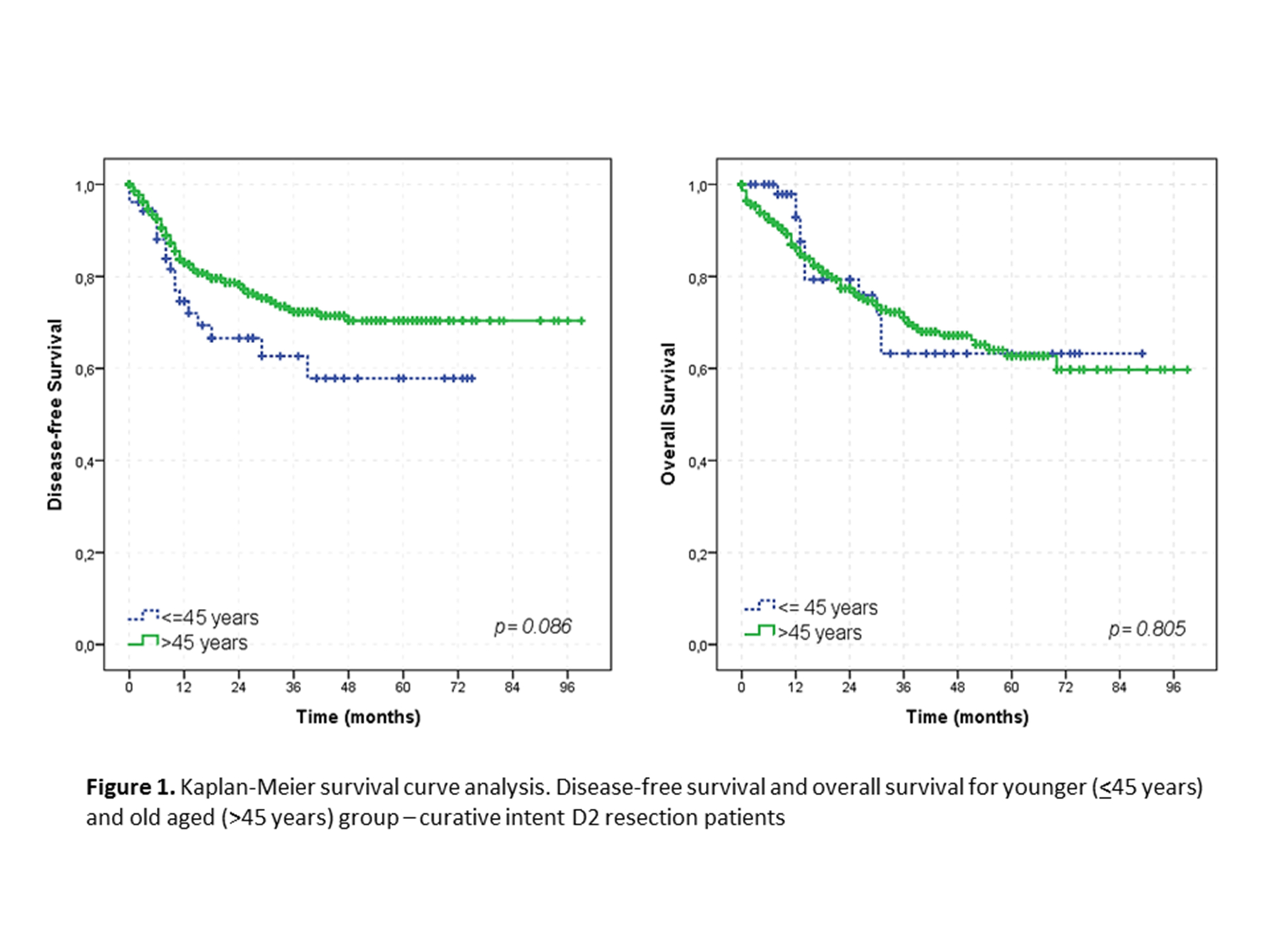CLINICOPATHOLOGICAL CHARACTERISTICS AND PROGNOSIS OF YOUNG PATIENTS WITH GASTRIC CANCER
Marcus F. Ramos2, Marina A. Pereira2, Vitor M. Sagae2, Marcelo Mester1, Andre L. Morrell2, André R. Dias2, Bruno Zilberstein1, Ivan Cecconello1, Ulysses Ribeiro*1,2
1Gastroenterology, University of São Paulo, Sao Paulo, SP, Brazil; 2Gastroenterology, Sao Paulo State Cancer Institute, Universitu of Sao paulo School of Medicine - ICESP-HCFMUSP, Sao Paulo, Sao Paulo, Brazil
INTRODUCTION:Gastric cancer (GC) in young and older patients may have distinct clinicopathological characteristics. It has been suggested that the young with the disease present a worse prognosis. However, this association remains controversial
OBJECTIVE:To evaluate the clinicopathological characteristics and prognosis of young patients with CG.
METHODS:We performed a retrospective analysis of all patients who underwent surgical treatment for GC from 2008 to 2017. Patients younger than 45 years were considered as "young group" (YG), and those older than 45 years were defined as old aged group (OAG).
RESULTS:Among 875 CG evaluated, 84 (9.6%) patients were less than 45 years old and 791 (90.4%) were older than 45 years. Curative surgery and D2 lymphadenectomywere performed more frequently in YG than CG(p=0.006 and p=0.027, respectively). Female gender (p<0.001), Charlson score ≤1 (p=0.002), ASA I/II (p<0.001) were more common in the YG. TNM clinical stage was similar between the two groups (p=0.335). No statistical difference was observed in DFS and OS between the YG and OAG of CG. The DFS rate was 47% for YG and 55.6% for OAG (p=0.179 and p=0.474, respectively).
Considering only patients undergoing curative surgery, ASA I/II (p=0.009), diffuse histological type (p<0.001), poorly differentiated tumors (p<0.001) and low frequency of major surgical complications (Clavien ≥III) (p <0.019) were all associated to YG. Location, lesion size and extent of resection did not differ between groups (Table 1). There was no difference between the groups regarding, tumor location, type of resection and pTNM stage (p=0.206). Adjuvant therapy was performed in 71.2% of patients in YG and 48% in OAG (p=0.002). Kaplan-Meier survival analysis showed no significant differences in DFS and OS between YG and OAF (p= 0.086and p= 0.805, respectively) (Figure 1). Also, when adjusted for Lauren's histological type, there was no differences between Lauren diffuse GC of YG and OAG for DFS (65.2% vs 72%, p= 0.456; respectively) and for OS (73.9% vs 67.7%, p= 0.518; respectively). Multivariate analysis identified total gastrectomy, pT3/T4 and pN+ as independent prognostic factors associated with worse DFS and OS. There was no significant association between patient's age and survival.
CONCLUSION:Female gender, better clinical conditions, diffuse histological type and undifferentiated tumors are characteristics associated to CG in young patients. GC in young patient has no worse prognosis compared to older patient.

Back to 2019 Posters




